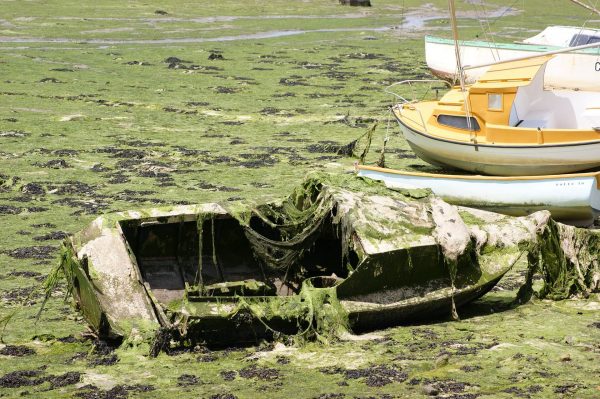Bio fouling is one of the main problems faced by every type of vessel at sea. Marine growths like barnacles and mussels cause further issues such as decreased ship performance, increased fuel costs and corrosion.
Conveniently though, there are many solutions on the market that combat fouling and one of the most effective is ultrasonic antifouling. Yachting Pages spoke to a range of industry experts to give a complete overview of the technology.
How does ultrasonic antifouling work?
Ultrasonic antifouling systems use digital electronics and ultrasonic transducer technology, which works by emitting multiple bursts of ultrasonic sound waves simultaneously in multiple frequencies, creating a pattern of alternating positive and negative pressure.
Microscopic bubbles are created from the negative pressure, while the positive pressure implodes them due to cavitation. It’s this implosion, which creates a micro jet action that does the cleaning on hulls below the waterline.
This destroys single cell organisms such as algae, the base component of any underwater ecosystems, which in turn will stop further growth.
Is ultrasonic antifouling a new concept?
The notion of ultrasonic antifouling has been around for three decades. However it has only been used in the marine industry in the last five to six years; prior to this it has been used for cleaning dental and medical equipment, engine parts and even jewellery.
Environmental issues over the past decade have become more stringent on traditional antifouling methods, meaning the industry needed to find a solution.
Does ultrasonic waves harm the environment or fish?
Many studies and tests have been conducted and none have showed any danger to marine life.
What are the advantages of ultrasonic antifouling?
- Reduced fuel costs – Having a clean hull can reduce a boat’s fuel bill by up to 30%. This is because any fouling on your boat’s hull will lead to increased resistance, which in turn means burning more fuel for every knot made.
- Environmentally friendly – There are no pollutants associated with this method of preventative antifouling. It is completely harmless to humans, animals, fish and marine mammals.
- Better hull performance – A streamlined hull will maintain speed through the water giving efficient performance and greater manoeuvrability.
- Reduced maintenance – With an ultrasonic antifouling system installed on a boat helping to maintain the hull and performance, the need to lift out and scrub the hull where it has become fouled, is dramatically reduced.
- Cost effective – This will soon pay for itself when taking into account fuel savings, reduced lift-outs and hull maintenance and repainting costs.

What are the disadvantages of ultrasonic antifouling
Initial outlay cost
The initial cost of these systems vary by size. For a small boat below 10m, one system and transducer would be sufficient costing under £1000, however a superyacht over 100m would require 10+ systems and transducers costing over £10,000.
Large yachts will require more than one system
To get the optimal effect yachts over 10m would require several additional transducers to be installed.
Not suitable for all yachts
It is important to note that the transducers need to be bonded to the inside of the outer skin of the hull. It is imperative to be able to access this as some yachts have inner skins with a filled cavity. These types of hulls would hinder the sound waves to transfer through to the outer skin making it ineffective.
Furthermore wooden hulls are not suitable. Wood has a low density and has many joints, which creates poor acoustic transmission of the ultrasonic high frequencies.
Haul outs will still be required
Ultrasonic antifouling is not 100% efficient. After a certain amount of time the boat will still need to be lifted out of the water and treated.
Are traditional antifouling methods still needed such as antifouling paint?
Painting the hull not only provides antifouling for your hull, but it is also a waterproofing barrier, protecting the coat from the effects of osmosis.
Ultrasonic antifouling does not rely on any other products to destroy bacteria and algae. However experts suggest the system is used in conjunction with antifouling paint, to prevent the hull from natural staining.
For example, the gel-coat of glass-reinforced plastic (GRP) hulls may look smooth to the naked eye, but has microscopic imperfections, which allow particles to penetrate and remain even after a high-pressure wash. A painted hull closes these imperfections in the gel-coat and although an old paint becomes inactive against fouling, it will continue to naturally wear on the surface. When used in conjunction with an ultrasonic antifouling system, it becomes a more effective combination. This means re-painting can therefore be reduced to once every three years.
(Source: here)

